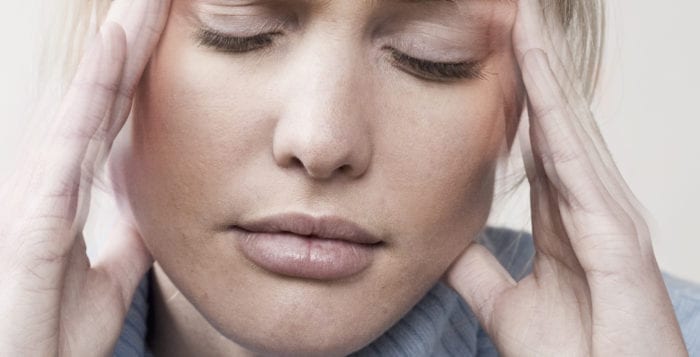Get out and enjoy Spring!
By David Dunaief, M.D.

Ah, the paradox of Spring. Trees and bushes are in full bloom, and flowers are popping up everywhere. For those with seasonal allergies — also known as allergic rhinitis or hay fever — it’s challenging to balance the desire to be outside with the discomfort it can bring.
According to the Centers for Disease Control and Prevention, 25.7 percent of U.S. adults and 18.9 percent of children were diagnosed with seasonal allergies in 2021 (1). Triggers include pollen from leafy trees, shrubs, grass, flowering plants, and weeds.
What prompts allergic reactions?
Sufferers experience a chain reaction when they inhale pollen. It interacts with immunoglobulin E (IgE), antibodies that are part of our immune system and causes mast cells in the body’s tissues to degrade and release inflammatory mediators. These include histamines, leukotrienes, and eosinophils in those who are susceptible. In other words, it is an allergic inflammatory response.
The revved up immune system then responds with sneezing; red, itchy and watery eyes; scratchy throat; congestion; sinus headaches; postnasal drip; runny nose; diminished taste and smell; and even coughing (3). It can feel like a common cold, but without the virus. If you have symptoms that last more than 10 days and are recurrent, then it is more likely you have allergies than a virus.
If allergic rhinitis is not treated, it can lead to complications like ear infections, sinusitis, irritated throat, insomnia, chronic fatigue, headaches and even asthma (4).
What medications help?
If you don’t want to seal yourself inside, to prevent allergy attacks, you might consider medications to reduce your symptoms.
Options include intranasal glucocorticoids (steroids), oral antihistamines, allergy shots, decongestants, antihistamine and decongestant eye drops.
The guidelines for treating seasonal allergic rhinitis with medications suggest that you use intranasal corticosteroids (steroids) when your quality of life suffers (5). Two commonly used inhaled steroids are triamcinolone (Nasacort) and fluticasone propionate (Flonase). They need to be used daily and can cause side effects, including headaches.
If itchiness and sneezing are your greatest challenges, second-generation oral antihistamines may be appropriate. These can be taken “as needed.” Examples include loratadine (Claritin), cetirizine (Zyrtec) and fexofenadine (Allegra). These have less sleepiness as a side effect than first-generation antihistamines, like Benadryl, but they don’t work for everyone.
Is butterbur an effective treatment?
Butterbur (Petasites hybridus) leaf extract has several small studies that indicate its efficacy in treating seasonal allergies. Butterbur is a shrub found in Europe, Asia and North America.
In one randomized controlled trial (RCT) involving 131 patients, results showed that butterbur was as effective as cetirizine (Zyrtec) (6). In another RCT, results showed that high doses of butterbur — 1 tablet given three times a day for two weeks — was significantly more effective than placebo (7). Researchers used butterbur Ze339 (carbon dioxide extract from the leaves of Petasites hybridus L., 8 mg petasines per tablet) in the trial.
A post-marketing follow-up study of 580 patients showed that, with butterbur Ze339, symptoms improved in 90 percent of patients with allergic rhinitis over a two-week period (8). Gastrointestinal upset occurred as the most common side effect in 3.8 percent of the study population.
There are several important caveats about using butterbur. The leaf extract used in studies was free of pyrrolizidine alkaloids (PAs). PAs have been implicated in causing liver and lung damage and may cause cancer (9). Also, studies used well-measured doses, which may not be the case with over-the-counter extracts. Finally, there are interactions with some prescription medications.
If you are allergic to butterbur-related plants, such as ragweed, chrysanthemums, marigolds, and daisies, butterbur may cause an allergic reaction (9).
Can dietary changes treat seasonal allergies?
There are no significant studies specifically on using diet; however, there is one literature review that suggests a plant-based diet may reduce symptoms of seasonal allergies in teens, as well as eczema and asthma (10). In my clinical practice, many patients with seasonal allergies have improved and even reversed the course of allergies over time with a vegetable-rich, plant-based diet. This might be due to its anti-inflammatory effects. Analogously, some physicians suggest that their patients have improved after removing dairy from their diets.
While allergies can make you miserable, there are many over-the-counter and prescription options to help. Diet may play a role by reducing inflammation. There does seem to be promise with butterbur extracts, there are caveats. Always consult your doctor before starting any supplements, herbs or over-the-counter medications.
References:
(1) CDC.gov. (2) acaai.org/allergies/types/pollen-allergy. (3) J Allergy Clin Immunol. 2003 Dec;112(6):1021-31.. (4) J Allergy Clin Immunol. 2010 Jan;125(1):16-29.. (5) Otolaryngol Head Neck Surg. 2015 Feb;2:197-206. (6) BMJ 2002;324:144. (7) Arch Otolaryngol Head Neck Surg. 2004 Dec;130(12):1381-6. (8) Adv Ther. Mar-Apr 2006;23(2):373-84. (9) ncchih.nih.gov. (10) Eur Respir J. 2001;17(3):436-443.
Dr. David Dunaief is a speaker, author and local lifestyle medicine physician focusing on the integration of medicine, nutrition, fitness and stress management. For further information, visit www.medicalcompassmd.com or consult your personal physician.






